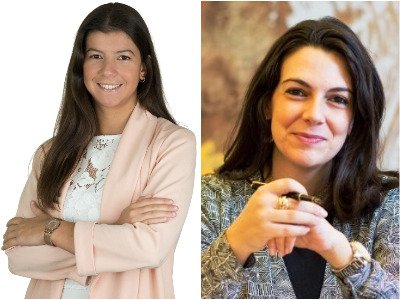Dressed for success… after a pandemic

“Fashion has to do with ideas, the way we live, what is happening” (Coco Chanel)
Although Coco Chanel’s original quote was somewhat longer, at Iberian Lawyer we wanted to highlight this part as we believe that everything that shapes us, including our clothes, communicates not only how we present ourselves to the world but also our ideals and our way of understanding and facing the present. Based on this hypothesis, we wanted to know how the Legal sector is dealing with the change of paradigm that the pandemic has brought about; principles and values that now take on value in the face of -perhaps- more superficial concepts linked to a way of life that has been left in the past -we believe- forever. We asked experts in Communication and Law, Fashion and Communication academics, Human Resources and Marketing managers from large law firms, as well as from a Legal Boutique and an ALSP, to understand how the codes are changing in this traditionally conservative sector.

COVID IMPACT ON THE LEGAL DRESS CODE
“We believe that the pandemic and the consequent reduction in the number of face-to-face meetings with clients has led to a relaxation in the dress code, leaving behind the suit jacket and the more formal attire hitherto predominant in the sector, replaced by more people in offices dressed in a more casual style. In our particular case, COVID has not brought any change, as at Allen & Overy we implemented business casual years ago,” says Samuel Rodríguez Calle, Human Resources director at Allen & Overy. Rosa Espín, Ambar Partners‘ CEO agrees with him and tells us that: “Actually, our dress code has not changed as a result of COVID, since AMBAR was born with the philosophy of inspiring and generating a change in the way of doing things in Business Law, adapting to the new economic and social environment, which means, among many other things, having a relaxed and free dressing style.”
From Linklaters Spain, they explained to Iberian Lawyer that smart casual was already adopted before the pandemic irruption, as the Human Resources director, Amparo Boria, affirms: “We started applying our smart casual policy just on Fridays and in the summer months, but in 2018 the office decided to extend it to the whole year. We were pioneers among the leading firms in Spain on this. The change in policy came about at the suggestion of staff at the office, following one of the employee satisfaction surveys we carry out regularly, in which we get the views of all staff on various aspects of work. These surveys enable us to identify and launch initiatives that help us create a working environment that is open, agile and adapted to the particular needs and circumstances of each member of staff. In our case, each staff member is responsible for choosing the appropriate dress for each situation and can switch from a smart casual style to more formal dress whenever their schedule requires. This applies to our everyday work, at the office in person and when working remotely.”
However, from Andersen in Spain they do recognise a certain impact. “The pandemic somewhat relaxed the formality of dress and since the end of the most severe confinement and the return to the offices, where requested by the professional or organised by department in an orderly manner, business casual was spread over several months. Summer coinciding with the time when this happened, and the reduction of face-to-face meetings, allowed for less strictness in terms of formality,” explains to us Blanca Olleros, head of People & Talent at Andersen. Something similar is what Jorge Pérez, head of Selection at Gómez-Acebo & Pombo wraps up by saying that: “There has been a general easing in terms of dress code all over the sector. The context has eased this matter for two reasons. Firstly, formal outfits mainly consist of suits, which became a problem because suit fabric cannot be washed the same as other clothes. In line with the authorities’ recommendation, our employees have started to follow a casual business dress code, which permits regular sanitisation. Apart from that, working from home has led to a natural relaxation while alternating with attending the office has made it difficult to introduce extra formal clothing. In addition to this, the lack of client meetings and events has reduced the inherent need for formal attire, which has increased the use of business casual, which used to be, at least at Gómez-Acebo & Pombo, only allowed on Fridays.” Pérez also confirms that this flexibility came to stay. “This flexibility is now a reality that we will have to deal with. Especially in the case of men who previously had to wear a suit every day, new options are now on the horizon, as we opt to keep business casual throughout the week, although a suit will still be necessary for client meetings and formal events,” he concludes.
The Portuguese firm PLMJ also assumes a certain relaxation in the dress code since the beginning of the health crisis and as a consequence of the new working patterns, although this has not meant an abrupt change either, as they say, they already were “one of the least formal” in terms of dress code within the Legal sector in Portugal as Alexandra Ferreira, Communication Public Relations director narrates: “Undoubtedly, the pandemic had the effect of ‘deformalising’ some aspects, including the way we started to dress. For over a year and a half, telecommuting has been the norm and the dress code has become more informal. At PLMJ it was no different, even though, for the law firm, we were occasionally less formal than the industry in general. In this context, we all lined up on the same gauge, clients and lawyers, on this path of less formalism, albeit with equal care. And this period required everyone, as a society, regardless of the sector, to develop even more empathy, and this also involves being in line with the general trend. During the pandemic, we all ended up showing a little more of ourselves, whether in the way we dress, our homes during a call, our families. All this reinforced proximity and we think it is healthy. Still, work is work and naturally there are implicit dress code rules that have never ceased to be respected.”
At Abreu Advogados they present themselves relatively more conservative when it comes to dress code, as the Human Resources responsible, Jessica Pereira, tells us. “Our firm has a dress code policy in place for several years, which is based on a professional and clean look. However, there is the possibility to choose a more informal dress code (casual Friday) on Fridays, Christmas Eve and during the judicial vacations.”
But what about the legal boutiques? How do they perceive this time of transition? “Initially, everything seemed to point to a change of criteria in those unwritten rules that we all are well aware of in the sector. The policies of the firms were greatly relaxed and a kind of freedom to choose was granted in order to decide how and what to wear, something that made sense because the vast majority of professionals were working from our homes.” The person who speaks now is Morad Maanan, lawyer of Whitewell Legal who, however, foresees a symbiosis between the formalism from the past and the new casual originated by the pandemic. “After that period the general impression is that that improvising freedom is losing ground and the ink of those unwritten rules shines again: the trend of the suit and the exceptional casual –but formal– dress code is back, although it is true that the casual style is a clear reality for days when meetings or public events are not scheduled,” he adds.
“Our office not only follows the lines of the sector but also adapts to the time and place,” continues Blanca. “It is true that the sector in Madrid has recovered dress formality much more quickly during the increase of activity, this has not happened in offices in other cities, where the climate is milder, and this also affects the wardrobe. This means that in offices such as Valencia there are more comparable percentages of formal and casual business wear extended over time. It is important to strike a balance between the comfort of the professionals and the style and formality that the client expects from the lawyer he or she trusts.”
DRESS CODE AND CORPORATE COMMUNICATION
She also explains that the People & Talent department is the one that takes care of these details. “We try to ensure that, within the freedom that everyone at Andersen obviously has when it comes to defining their style, a sober image is maintained, which is what characterises our office. An image that we seek to transmit at all times with a modern, flexible and accessible approach, and that is why there is a certain degree of permissiveness at certain times, which allows us to adapt our wardrobe to the situation.” Adaptation is also the selected word from GA_P: “We adapt to the times. We adopt a fresh, personable and natural approach.”
Allen & Overy recalls that they were pioneers of business casual style among law firms in Spain. “The more casual way in which our professionals dress reflects a more approachable style, which is a hallmark of Allen & Overy. By dressing a little more informally, we show that our character is more approachable and casual, leaving behind the rigidity often associated with lawyers and showing our own personality marked by closeness to each other and to our clients.” Amparo, from Linklaters, gives us a similar approach. “Our dress code is intended to reflect our goal of promoting a flexible and agile working environment in all aspects, one that is adapted to staff members’ needs, encouraging respect for each worker’s different circumstances, and fully trusting in each staff member’s judgment in choosing how to dress appropriately.”
Dress code flexibility is part of Alternative Legal Services Provider Ambar Partners’ business philosophy. “Our dematerialised and decentralised structure allows our lawyers to work from wherever they want, so their dress code is what they feel and want every day. In the office, we do not have a specific dress code. One of our main values is flexibility, a concept that is closely related to freedom and that applies not only to the way we work, but also to the way we see life, and our dress code also reflects this reality,” comments Rosa Espín.
“There are no written rules at PLMJ on this topic, but the way you dress reflects our culture and if I had to define it in three words, I would say freedom, diversity and boldness. We have strict rules on issues that we believe must be scrupulously formalised, but we believe a lot in the common sense of our people and, above all, in their individuality,” asserts Alexandra Ferreira. “We think that our brand, which changed two years ago, reflects us very well and just look at our photographs to see that these three words – freedom, diversity and boldness – are values we all share.”
Morad, from Whitewell Legal, links smart casual with what he calls “traditional but modern”. “At Whitewell Legal we are `modern traditional’. Usually, we wear suits (personally, double-breasted) but we cannot rule out seeing ourselves ‘on the street’ on days when we do not have excessively formal meetings or events; it is even possible to see ourselves wearing a shirt, jeans and sneakers.”
Diversity is another word that has stood out in this small study. “We have a truly diverse team, with 12 different nationalities, a wide range of generations, from Baby Boomers to Generation Z, which makes the variety in styles and brands very wide, and this enriches our image making it more fresh, diverse and global, which is what sets us apart,” says Blanca. This diversity is also reflected in the outfits of Andersen’s staff, which, in principle, have nothing specifically forbidden. “In terms of recommendations on clothing, colours, accessories, etc., the firm prioritises the freedom of all professionals to express their style and trusts that this is in line with the firm’s line because we are all in the same boat, we share the same values, and we know that the personal image that the professionals want to transmit is the same as that of the firm itself.” Linklaters also ensures that the environment is balanced and comfortable for everyone. “It is very important for the firm to create an environment that lets everybody develop our talent, in a flexible space that encourages learning and innovation. These aspects are particularly important for us to flex to the constant changes we are experiencing, where we have had to adopt new ways of doing things and new ways of working,” concludes Amparo.
Questions such as… Tie, yes? or no? receive more or less the same answer from all those consulted. It depends. “At Allen & Overy Spain we have a natural tendency towards a more casual style, although the tie still predominates in client meetings. Nothing is forbidden in our office and common sense prevails. Our firm’s professionals dress casually and comfortably on a day-to-day basis, but always appropriately for a working environment, which generally excludes sportswear,” answers Samuel. Jorge, from GA_P adds “Elegance is not incompatible with a casual style, but it is true that it is a rather subjective criterion, so we tend to leave out more casual garments of the dress code. As for ties, we believe that they are no longer necessary. In principle, there is no prohibition. The idea is to always project a clean and professional image.” Jessica, from Abreu Advogados, agrees: “Elegance and informality can be combined in the same look, as long as the focus and main concern doesn’t change: to have a professional look that conveys a sobriety image.”
To sum up, the new times and forced teleworking have softened the rigidity of dress codes in the Legal sector. Casual elegance or business casual becomes the common point of most firms: to take care that everything as a whole transmits their principles and values.
By Desiré Vidal.
To read the full article on issue number 106 click here












